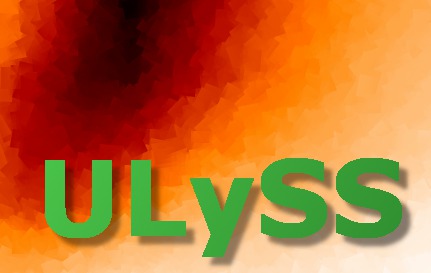
|

|
One of the strength of ULySS is the set of tools included to help to
study the parameters space. The problems handled with ULySS are non-linear
and often complex enough to present degeneracies, multiple minima and
restrictions on the convergence to the absolute minimum.
This page presents some examples of Monte-Carlo simulations, chi2 maps
and convergence maps.
To follow this tutorial it is advisable first to read the general tutorial.
GDL> grid=uly_ssp_read(uly_root+'/models/PHR_Elodie31.fits', SIGMA=50., VELSCALE=50.)
GDL> young = uly_ssp_interp(grid, [alog(500.), 0.])
GDL> old = uly_ssp_interp(grid, [alog(10000.), -1.])
GDL>
GDL> spectrum = uly_spect_alloc(DATA=0.1*young+0.9*old, START=grid.start, STEP=grid.step, SAMPLING=1)
GDL> cmp1 = uly_ssp(AG=[500.], ZG=[0], AL=[200.,3000.]) GDL> cmp2 = uly_ssp(AG=[10000.], ZG=[-1.], AL=[3000., 12000.]) GDL> cmp = [cmp1, cmp2] GDL> ulyss, spectrum, cmp
Read the model ./models/PHR_Elodie31.fits read the file ./models/PHR_Elodie31.fits model reading time= 1.7927818 Convolve the model with Gaussian, sigma= 50.0000 km/s model deriving time= 0.22342515 -------------------------------------------------------------------- INPUT PARAMETERS -------------------------------------------------------------------- Name of the output file output.res Degree of multiplicative polynomial 10 No additive polynomial Component1 (cmp1) model:./models/PHR_Elodie31.fits Guess for age: 500.00000 [Myr], Fe/H: 0.0000000 [dex] Component2 (cmp2) model:./models/PHR_Elodie31.fits Guess for age: 10000.000 [Myr], Fe/H: -1.0000000 [dex] -------------------------------------------------------------------- Read the model ./models/PHR_Elodie31.fits read the file ./models/PHR_Elodie31.fits model reading time= 1.7861340 model deriving time= 0.22379780 Read the model ./models/PHR_Elodie31.fits read the file ./models/PHR_Elodie31.fits model reading time= 1.7899010 model deriving time= 0.22375083 -------------------------------------------------------------------- PARAMETERS PASSED TO ULY_FIT -------------------------------------------------------------------- Wavelength range used : 3900.2252 6801.1087 [Angstrom] Sampling in log wavelength : 50.000000 [km/s] Number of independent pixels in signal: 3334 Number of pixels fitted : 3334 DOF factor : 1.00000 -------------------------------------------------------------------- number of model evaluations: 12 time= 0.20227480 Number of pixels used for the fit 3269 cz : 0.0000000 +/- 0.00062760970 km/s dispersion : 50.000000 +/- 0.00068582551 km/s ----------------------------------------------- estimated SNR : 54810.876 ----------------------------------------------- cmp #0 cmp1 Light fraction : 48.695512 +/- 0.014961593 % Weight : 0.099943584 +/- 3.0707454e-05 [data_unit/cmp_unit] age : 500.00000 +/- 0.022189165 Myr Fe/H : 0.0000000 +/- 3.9526592e-05 dex ----------------------------------------------- cmp #1 cmp2 Light fraction : 51.304488 +/- 0.015264779 % Weight : 0.90047556 +/- 0.00026792121 [data_unit/cmp_unit] age : 10000.000 +/- 1.7618713 Myr Fe/H : -1.0000000 +/- 4.6371446e-05 dex -----------------------------------------------
GDL> ulyss, spectrum, cmp, NSIMUL=500, SNR=100, FILE_OUT='tuto_chi', /QUIET, /PLOT
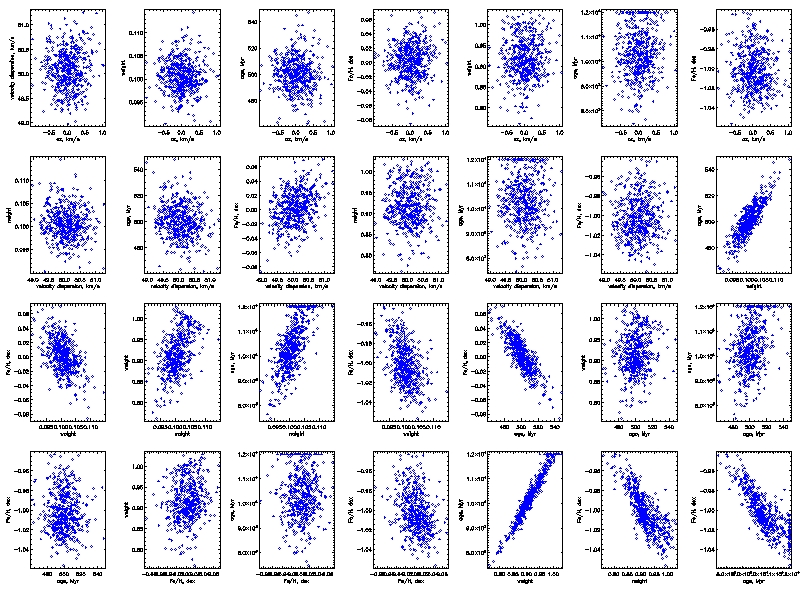
GDL> uly_solut_tplot, 'tuto_chi', XAXIS=4, YAXIS=5, XRANGE=[300.,14000.], YRANGE=[-1.2, 0.3], /XLOG GDL> uly_solut_tplot, 'tuto_chi', XAXIS=7, YAXIS=8, /OVER, LINECOLOR='red'
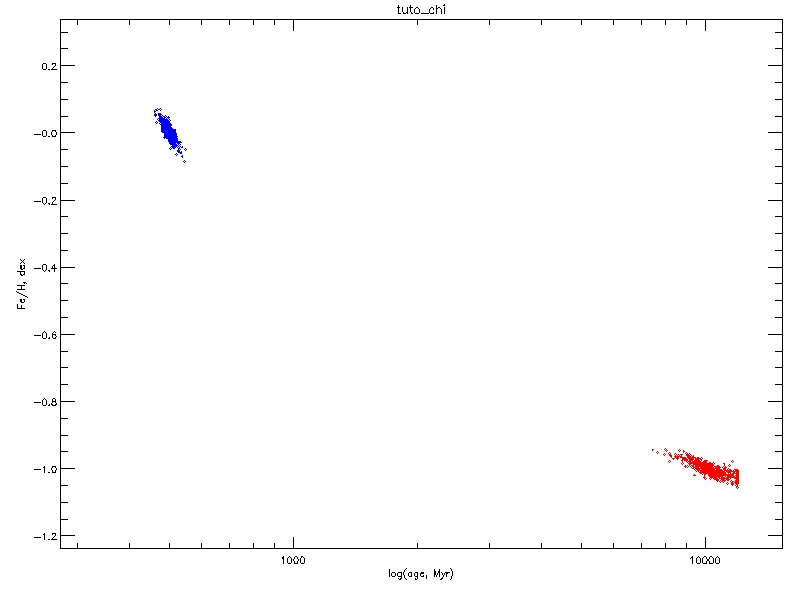
GDL> ulyss, spectrum, cmp, NSIMUL=500, FILE_OUT='tuto_chi', SNR=15, /QUIET GDL> uly_solut_tplot, 'tuto_chi', XAXIS=4, YAXIS=5, XRANGE=[300.,14000.], YRANGE=[-1.2, 0.3], /XLOG GDL> uly_solut_tplot, 'tuto_chi', XAXIS=7, YAXIS=8, /OVER, LINECOLOR='red'
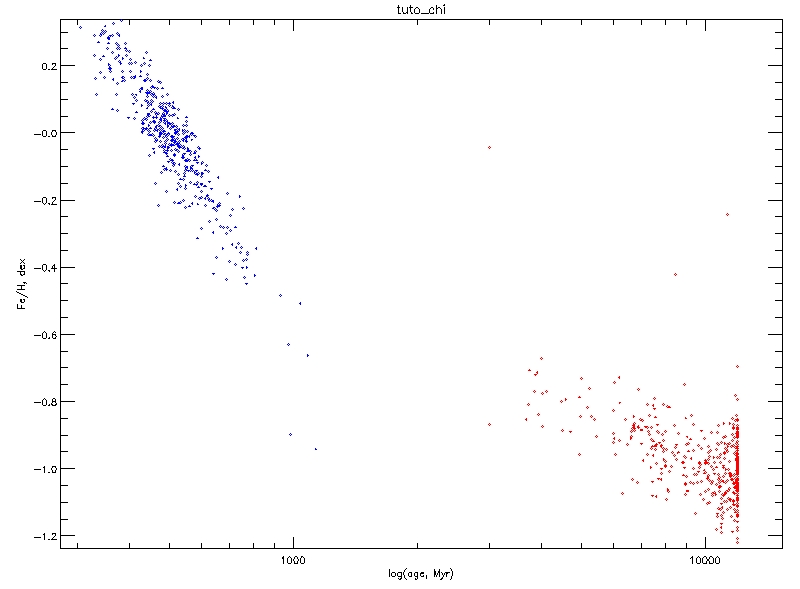
GDL> chi1 = uly_chimap(spectrum, cmp, [[0,0],[0,1]]) GDL> chi2 = uly_chimap(spectrum, cmp, [[1,0],[1,1]]) GDL> window, 0 GDL> uly_chimap_plot, chi1, /XLOG, YRANGE=[-1.2, 0.3] GDL> window, 1 GDL> uly_chimap_plot, chi2, /XLOG, YRANGE=[-1.2, 0.3]
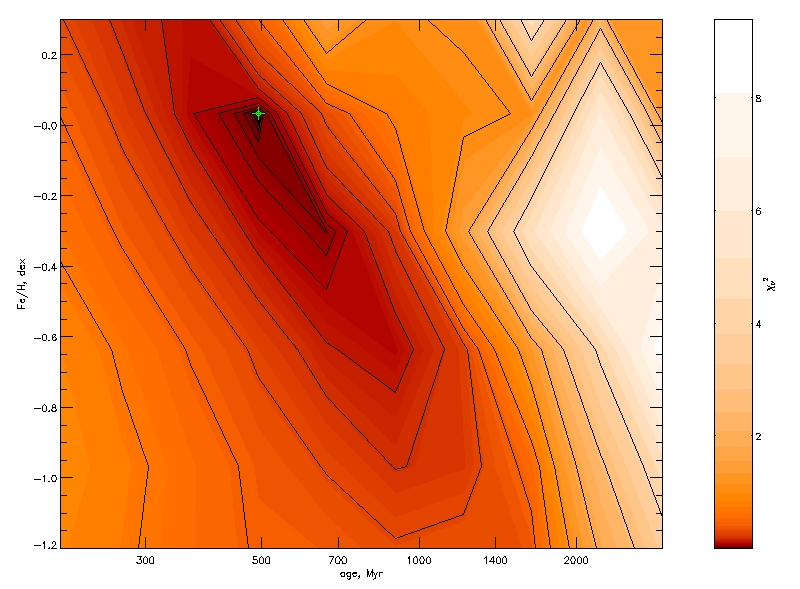
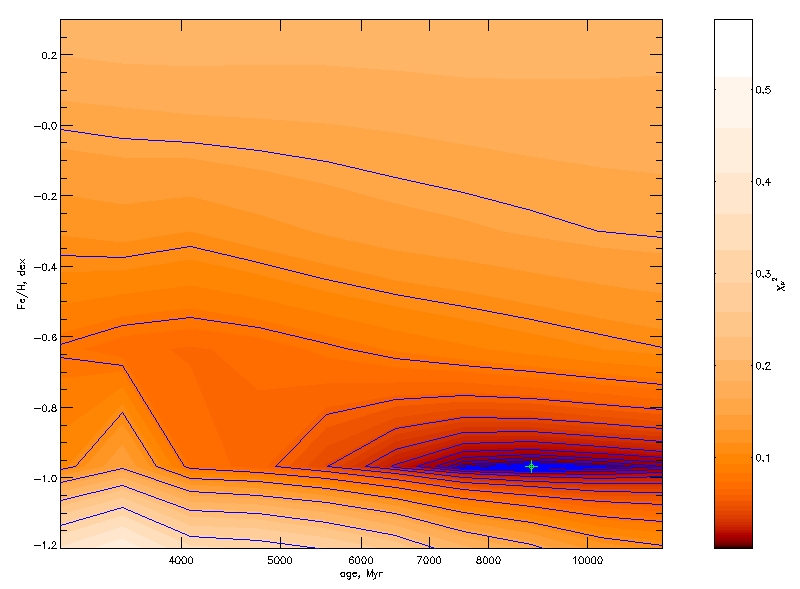
GDL> uly_chimap_plot, chi1, XRANGE=[300.,14000.], /XLOG, YRANGE=[-1.2, 0.3], /HIDEHALFTONE, /HIDEMINIMA
GDL> uly_chimap_plot, chi2, /HIDEHALFTONE, /HIDEMINIMA, /OVER, LINECOLOR='red'
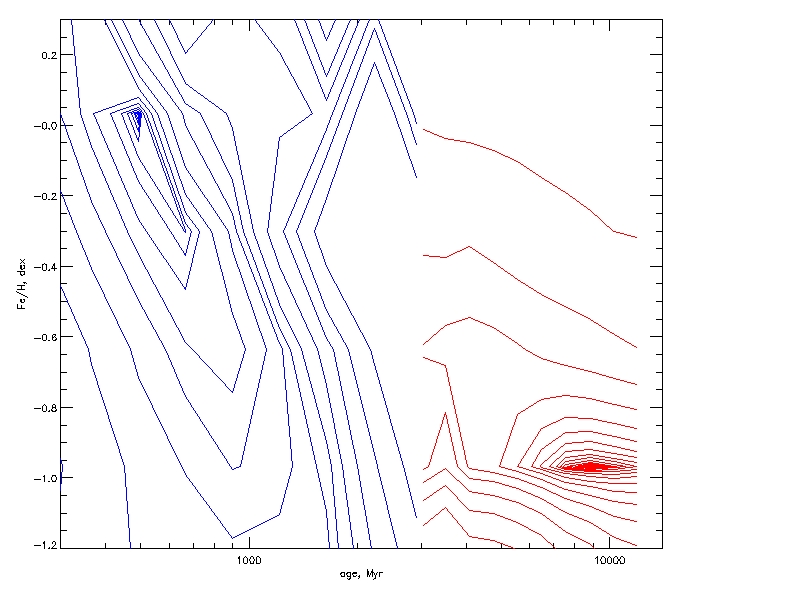
GDL> gal=uly_root+'/data/VazMiles_z-0.40t07.94.fits' GDL> cmp = uly_ssp(AG=[500d,1000d,2000d,4000d,8000d,15000d,18000d], ZG=[-2d,-1.5d,-1d,-0.5d,0d,0.3d]) GDL> ulyss, gal, cmp, /ALL_SOL, FIL='absolute' GDL> uly_solut_tplot, 'absolute.res', XA=[0,0], YA=[0,1], XR=[300,25000], YR=[-1.6,0.5], /CV, /XLOG
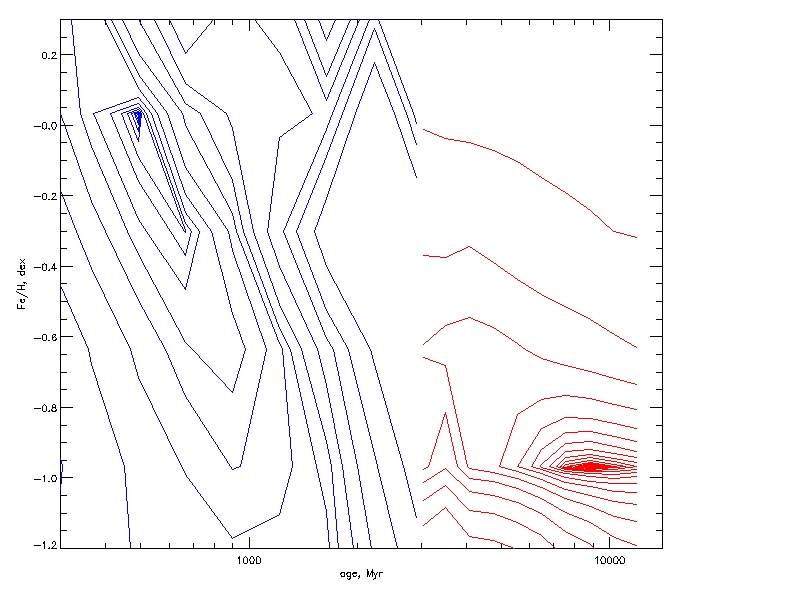
| Contact: ulyss at obs.univ-lyon1.fr |
Last modified: Thu Jul 31 13:57:09 2008. |